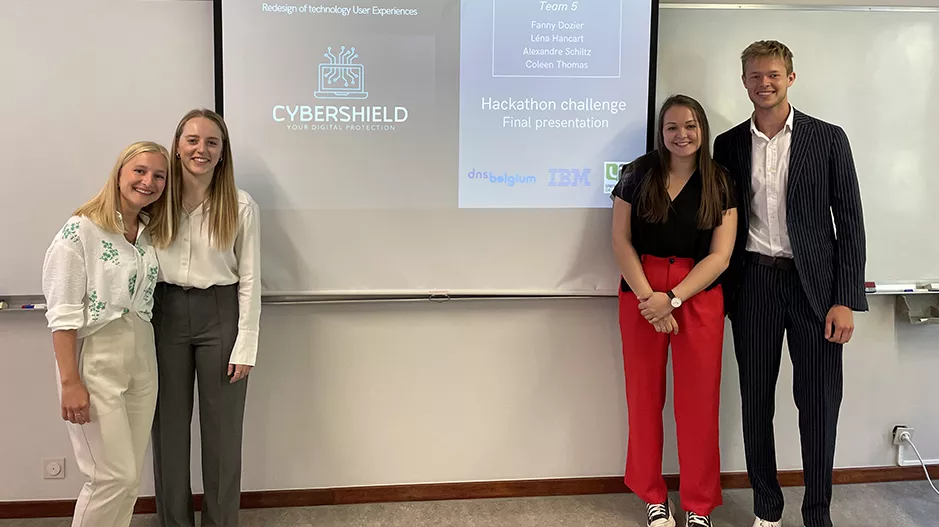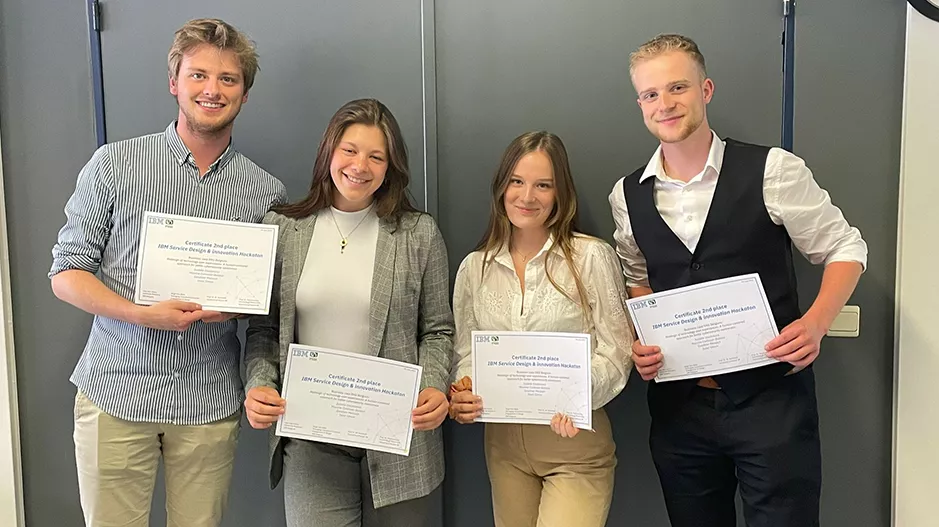UNamur students took part in this hackathon, organised in partnership with IBM and DNS Belgium, as part of Professor Wafa Hammedi's Service Design and Innovation course.
"This year's theme was cybersecurity. From February to May, the students had to design, develop and test, in groups of 4 or 5, an innovative solution to meet the needs of their client, DNS Belgium. For our students, this is a real opportunity to come face to face with the business world, both from an educational and a personal point of view. They have to work on a real-life business case, with a major player in the sector as their client, and produce several deliverables that are assessed by a high-level professional and academic jury," explains Wafa Hammedi, Professor of Economics.
Particularly active in the field of cyber security in Belgium, DNS Belgium is investing heavily in awareness-raising programmes and is seeking to reach out even more to certain groups of people identified as being more vulnerable to the dangers of cyber attacks. These include young people (aged 14-18), students and the elderly (aged 65+).
"As web managers in Belgium, we are above all interested in the safety of Internet users. We invest not only in technical protection on our side, but also in raising awareness among users, particularly the most vulnerable. Always on the lookout for new ideas to best reach them, it was not only an honour but also a pleasure for us to work with the UNamur students under the mentorship of Professor Wafa Hammedi, and of course with our colleagues at IBM", explains Arnaud Recko, sustainability coordinator at DNS Belgium.
The UNamur students were tasked with developing projects that would provide better protection for these vulnerable groups on the web. The approach had to be comprehensive, and included collecting and analysing data from target audiences, carrying out market research and testing the proposed solutions. After evaluation by a jury made up of academics from UNamur and managers from IBM and DNS, here are the three winning projects.
First place: The CyberShield project
The students in this group proposed an application that brings together all aspects of cyber security in one place. The application helps users proactively to maintain a secure connection, and reactively to guide them in the event of a problem.
"This challenge was rewarding, because it was our first real intervention in a professional environment, while remaining accompanied," explains Alexandre Schiltz. "The way it was organised, in the form of a challenge, was also something that pushed us to excel, with healthy competition between the teams in the class".

Second place: The "NetWise" project
The group came up with a mentoring application designed to bring together young volunteers with knowledge of online security (the mentors) and older people, so that the former can guide the latter through various activities on the application, to learn more about cybersecurity and develop good practices on the Net.
"Working with a client who expects us to deliver a plausible and serious solution for the target group was one of the most stimulating aspects of this exercise," says William Thomas. "IBM was also on our side to push us to present a concrete project during the final evaluation".
Third place: The "SecuritEase Calendar" project
The idea behind this solution, which is aimed at the elderly, is to add a whole new function to the calendar used by consumers: to communicate about cyber security in a creative and fun way. Each month, an attractive visual would be available for the elderly to learn more about advice, good practice and the various terms related to cyber security.

"The Hackathon experience can be summed up in three words: meetings, sharing and creativity. On a professional level, we looked at the social aspect of the business, bringing a new, more human vision, focused on the issues and needs affecting certain people. This social aspect became more and more present during meetings with our stakeholders, the elderly", explains Maxime Corbisier-Baland. "Then, we had the opportunity to meet some of the key players in this challenge, namely members of DNS Belgium and IBM, with whom we had rewarding and motivating discussions, all with the incomparable support of our teacher". What lesson has he learned from this experience? "The creativity of an individual can create ideas, but the creativity of a group leads to concrete projects that stand out from the rest"!